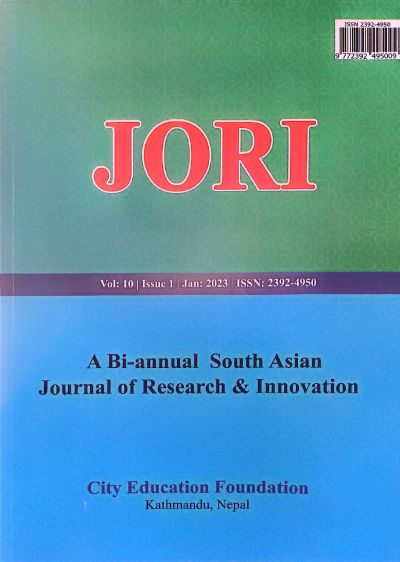Factors Influencing Reinsurance Costs of Nepalese General Insurers
DOI:
https://doi.org/10.3126/jori.v10i1.66082Keywords:
insurance, reinsurance, ratio analysisAbstract
Although reinsurance is a ubiquitous practice in the insurance industry, it is not devoid of associated costs. In order to obtain the pledge of reinsurers, who are essential in sharing any risks/Losses, insurers are required to pay specific costs. The primary objective of this article is to examine firm-level variables that might have an influence on an insurance company's reinsurance costs. A study of the relationship between reinsurance costs and several financial and technical ratios, which are regarded as effective monitoring tools for insurers, has been accomplished in order achieve the aforementioned objective. Using panel data analysis, the relationship between reinsurance costs and both financial and technical indicators has been carefully examined. The information, which includes variables from 14 General insurance firms between the years 2010 and 2022, was obtained from the authorized portal of the Nepal Insurance Authority (NIA). One model focused on financial ratios, while the other went in-depth with technical ratios. Additionally, the analyses were revised to consider the 2015 Major earthquake and recent COVID-19 timeframe, revealing possible effects at these particular times.
The findings of the study revealed an interesting observation regarding the impact of various financial and technical ratios on reinsurance costs. Financial ratios, such as return on assets and debt ratio, as well as the technical ratio, retention ratio, had a significant negative impact on reinsurance expenses. In other words, as profits, debt levels, and retention ratios rise, insurance companies become less willing to bear insurance costs and prefer to bear a greater portion of the risks. Even after accounting for the disruptive periods of the2015 Major earthquake and recent COVID-19 pandemic, these variables maintained their negative influence on reinsurance costs. In addition, the Net Combined Ratio emerged as an additional significant determinant of reinsurance costs when the data from the COVID-19 were excluded. This suggests that the Net Combined Ratio continues to have a significant impact on reinsurance costs even in the absence of this crisis period. Reinsurance is required as long as there is an insurance industry, which makes its existence essential. To prevent potential severe damages brought on by occurrences like fire, flood, or earthquake, these two sectors must work closely together. However, as with any transaction in this economic system, there are expenses involved in the process of reinsuring an insurance contract. According to research, several variables, particularly the return on assets, debt ratio, and retention ratio, are important in determining how much reinsurance will cost.




